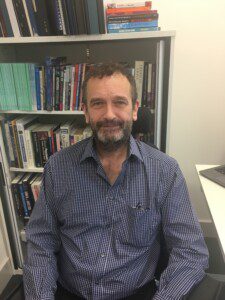How communities can play an important role in helping people in addiction recovery

David Best, a Professor in Addiction Recovery at Leeds Trinity University’s Faculty of Social and Health Sciences, explains the science behind recovery
It’s generally recognised that addiction is a chronic and relapsing condition. But in recent years it has become apparent that the majority of people with a lifelong substance addiction – even to drugs like heroin and cocaine – will eventually achieve a stable and drug-free recovery. This results in a better quality of life, active participation in their communities and some form of ‘giving back’ to repair the harms they have done.
We now have a science for how that happens, based on a concept known as ‘recovery capital’. This refers to the strengths and breadth of internal and external resources a person can call upon to support their recovery journey. For the last 10 years my work has been around how to make measuring recovery capital more accurate and effective and how it can be presented in a form that is engaging, acceptable and meaningful to people on their own recovery journeys.
This has culminated in my development of an evidence-based assessment and recovery planning tool I’ve called REC-CAP (first published in 2017). This is used to assess an individual’s recovery strengths, barriers and unmet service needs. It supports trained navigators to guide people in carrying out recovery goals and measures success achieved. It has now been completed by around 20,000 people in the UK, United States, Canada and New Zealand.
Most people who have completed the REC-CAP are based in recovery residences in the United States – which offer specialised support for people dealing with addictions. Indeed, it is not possible for organisations in the state of Virginia who provide recovery housing to get state funding for this if they do not use the REC-CAP and this is likely to happen in Michigan in the near future as well.
This work has allowed us to test who does well and who is at greater risk of drop-out and relapse, which could result in reoffending and returning to prison. In the UK, we are hoping to start a pilot run of the REC-CAP in a number of adult male prisons, but there are some big lessons from the US that we could learn here. We need a commitment to evidence-based practice and a government commitment to both recovery research and applying that research to everyday practice.
The work in the United States also operates on the understanding that recovery is a process in which a safe place to live is essential and that a recovery model requires a commitment to sober living facilities for people early in their recovery journeys.
More generally, the lesson from our work in the US is about moving away from a clinical environment which focuses on someone’s struggles towards an approach concentrating on their strengths where peers are of central importance. There is a recognition that recovery happens in communities, not in specialist clinics.
I have been very fortunate to be able to champion this work across seven states in the US and I was recently presented with a Recovery Innovations award by the National Association of Recovery Residences at its annual conference in Richmond, Virginia. Not only that, but several housing providers offered personal testimonies about how the REC-CAP and the broader model of strengths-based working had transformed their working lives.
The US will remain at the forefront of innovation and science in this area but the publication of a new drug strategy (“From Harm to Hope”) offers a meaningful opportunity for real change which I hope can be adopted further afield. Innovative practice must be matched by a commitment to recovery science and looking at new ways of addressing the complex and growing challenges faced by families and communities supporting people through addiction recovery.
